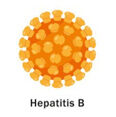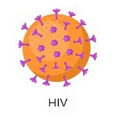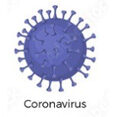Focus Areas
Our Development Approach: 3 Groups Of Viruses
Proof Of Concept

Chronic Global Infections
Hepatitis B (HBV)
VNLX-102: Designed to treat chronic HBV infections, with low mutation rates, that currently require long-term treatment with direct acting antivirals (DAAs), but cannot be cured. Proof of concept (PoC) in HBV could be applied to other chronic infections
High Mutation / Pandemic
Influenza
VNLX-103: Designed to treat seasonal infections/pandemic infections that have high mutation rates where current treatments focus on vaccination or spike protein assembly. Proof of concept (PoC) in Influenza could be applied to other acute infections

Biosecurity Threats
Smallpox and Mpox
VNLX-104: Designed to treat potential biohazard threats where pathogens are intentionally modified and released into the environment. *a library of potential pathogens and mutations can be established* Proof of concept (PoC) in smallpox/mpox could be applied to other pathogens
Potential Follow Up

HIV
VNLX-105: Designed to treat chronic HIV infection that currently requires long-term anti-retroviral treatment but cannot be cured. Other potential targets: Epstein Barr virus, human papilloma virus, herpes simplex viruses 1 & 2, varicella zoster virus

COVID/SARS-COV-2
VNLX-101: Designed to treat acute or prevent infection following exposure to COVID. Currently deprioritized due to current investments in COVID research.
Other potential targets: MERS, SARS-COV-1, rubella, measles, rotavirus, norovirus.

Ebola
VNLX-106: Designed to treat Ebola virus infection that has a mortality of 50-90%, no approved treatments or vaccines, and is highly contagious
Other potential targets: Marburg virus, Nipah virus, hantaviruses
Stable Development Pipeline
RAPTOR-AI™, our oligonucleotide-based, in-house drug development platform, is capable of addressing several viral infections with high unmet medical need starting with VNLX-102 (hepatitis B) and additional pipeline including VNLX- 103 (influenza), and VNLX-104 (smallpox) among others.
RAPTOR-AI™ has been designed to work not only against single viruses, but also against families of viruses. This allows us to design a single drug which can target multiple viruses of the same family, and viruses with several strains with high specificity.
Given the overall impact of the diseases we are aiming to address, the expected improvements over available therapies and the favorable adverse event profiles, we anticipate to achieve breakthrough drug designation with most of our pipeline.
